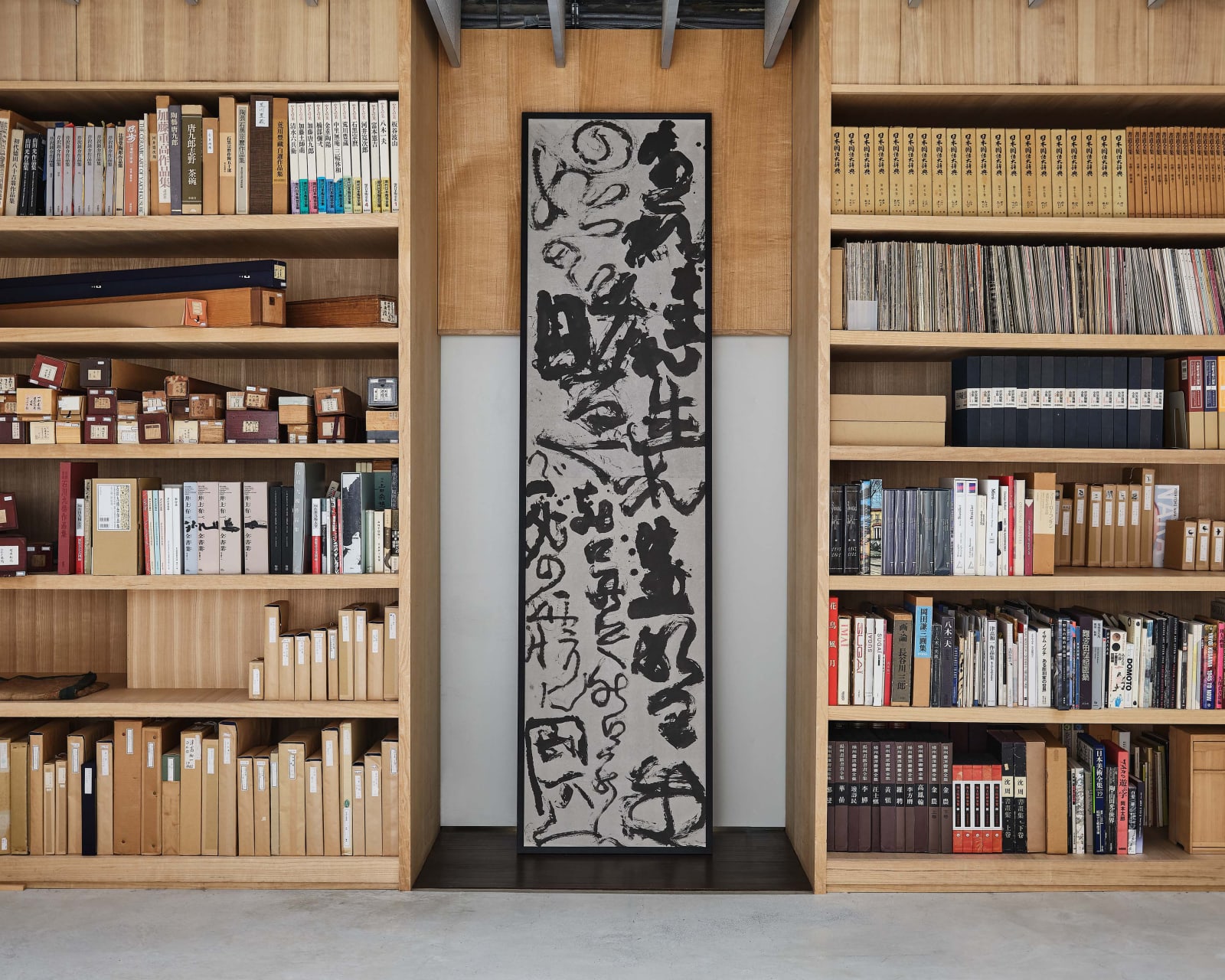Ishikawa Kyuyoh (b. 1945)
1980
With a label signed by the artist
276 x 68 cm
281 x 73 cm (overall)
Exhibitions
The 9th Hana naki bara no kai exhibition. 1980.
Ishikawa Kyuyoh: The Complete Works. Tokyo: Ueno Royal Museum, 2024.
Literature
Collected Works of Ishikawa Kyuyoh: Yet…. Kyoto: Shibunkaku Publishing, 1987.
Ishikawa Kyuyoh: The Complete Works. vol. 1. Kyoto: Shibunkaku Publishing, 2024.
From the late 1970s to 1980, Ishikawa Kyuyoh’s work underwent significant changes. Reflecting on The World’s Menstrual Cycle Stopped (1979), he stated, “For me, this was the final ‘black’ work, layering gray upon gray, before I returned to working on white paper” (Autobiographical Record). He continued, “I couldn’t push further in this direction; I had to move on. With that feeling, I created the 1980 work My God, My God, Why Hast Thou Forsaken Me? or Morbidity Verse. (…) My ‘gray period’ ended here, and from now on, I would have to change” (ibid.). This work dates from that same year, 1980.
The work here draws on the striking phrases from the preface poem of Kūkai’s Precious Key to the Secret Treasury. These words are generally understood as revealing the nature of human life and death—emerging from darkness and returning to darkness—within the cycle of reincarnation, where the beginning is indistinguishable from the end. Kūkai’s original text, written in a series of kanji characters, possesses a unique, compelling force even in print, demonstrating the linguistic genius of the great Kūkai. Ishikawa, confronting this challenge head-on, transcribed the text onto gray-dyed paper, exactly as if reading it aloud, incorporating Japanese okurigana characters that are not present in the Chinese original. He varies and abbreviates the repeatedly occurring characters for “birth” and “death,” rendering them differently each time. Given that this piece coincides with the end of Ishikawa’s “gray period,” these characters—emanations of Ishikawa’s brush—seem to take on an additional meaning, embodying the very notion of the life and death of a particular style in the artist’s work.
Ishikawa Kyuyoh (calligrapher; b. 1945)
Born in Fukui Prefecture, Japan in 1945. Graduated from the Faculty of Law at Kyoto University. After serving as a professor at Kyoto Seika University and the director of the Institute for Writing and Civilizations, he is now an emeritus professor at the same university. Ishikawa has elucidated the concept that “calligraphy is the art of hisshoku (taction),” and interprets the structure and history of calligraphy. As a critic, he is also active in discussions on the Japanese language and culture, which have had a significant impact across various fields. In both his artistic creations and written works, Ishikawa continues to produce cutting-edge expressions and insights. His body of work includes over 2,000 calligraphic pieces and more than 100 published books.



